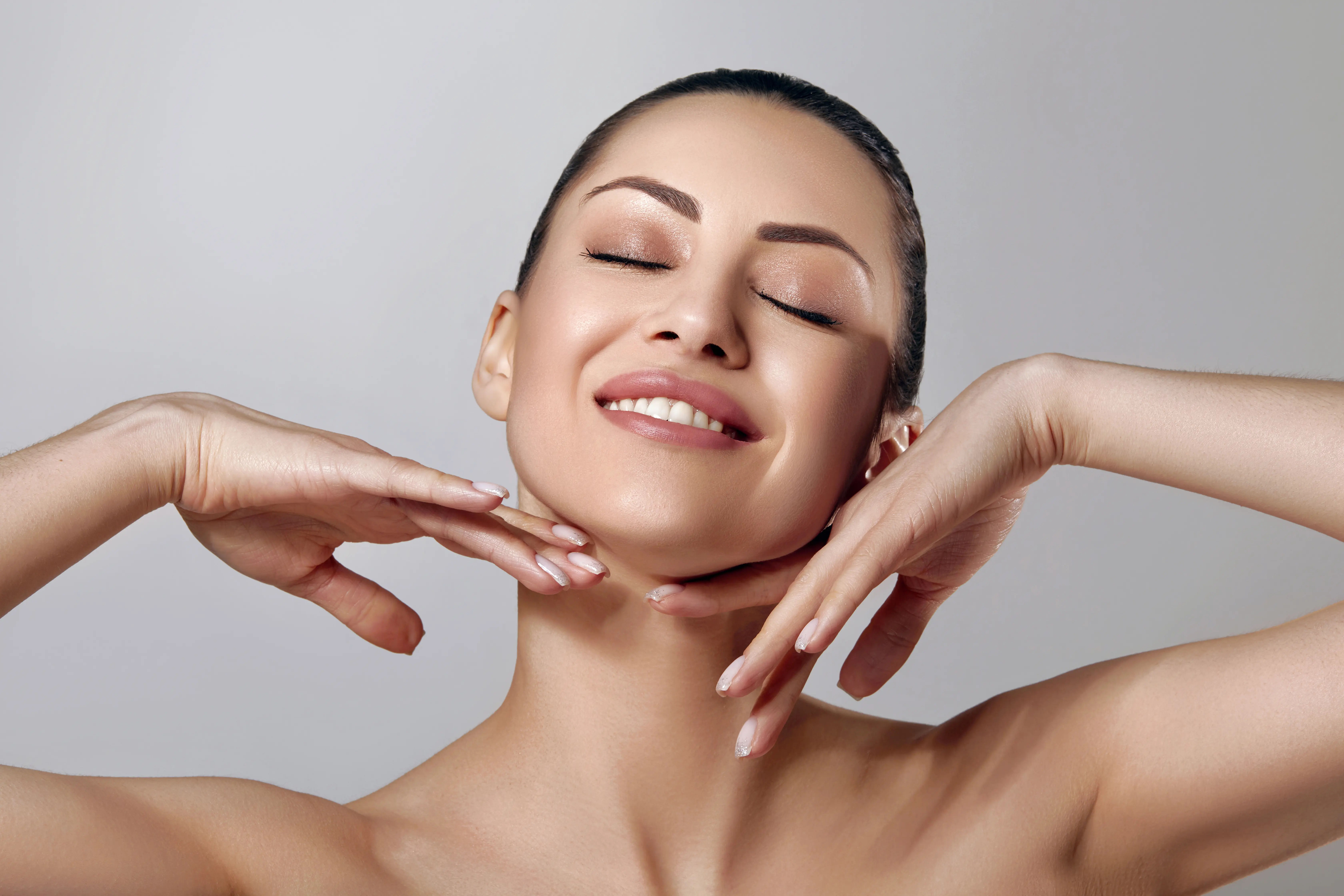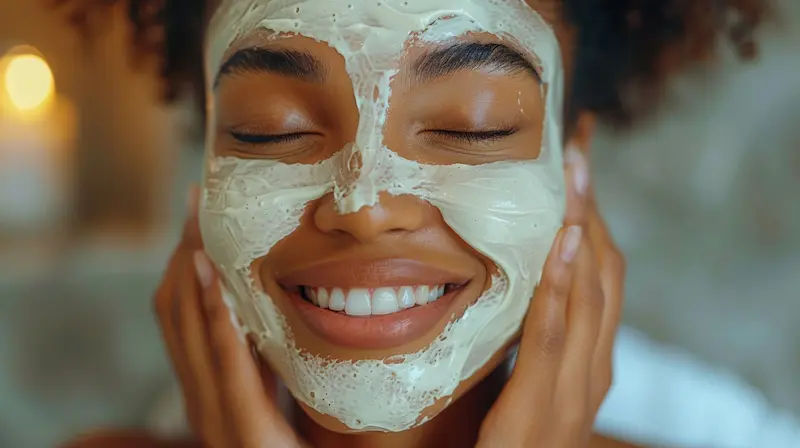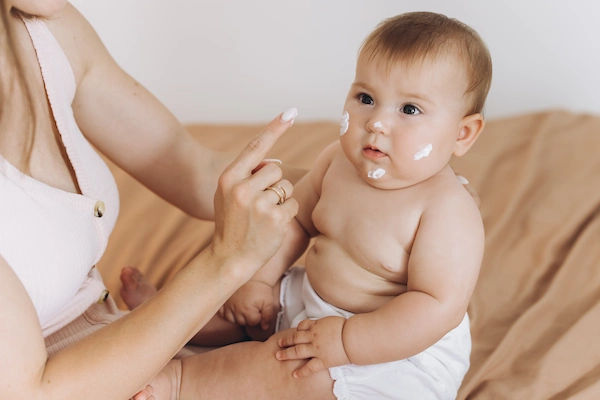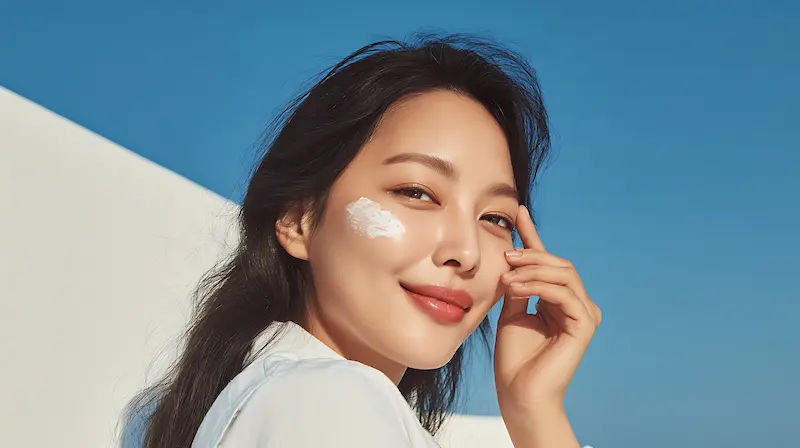Guide to Know Treatment Options Your Skin And Hair
Explore the full spectrum of treatment options for skin and hair health, from advanced dermatological procedures and cosmetic enhancements to effective home care routines and medical therapies.

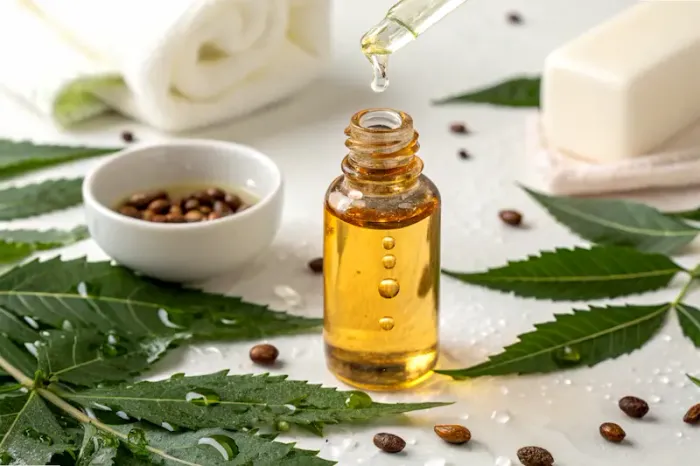
Introduction
Healthy skin and hair affect how you look, feel, and show up in daily life. Yet with so many products and procedures, it’s hard to know which options actually work and in what order to try them. This guide distills proven treatment options for common skin and hair concerns—acne, dryness, redness, hyperpigmentation, dandruff, hair loss, and more—so you can build a plan that’s safe, effective, and realistic for your budget and timeline. Drawing on top dermatology sources and clinical evidence, we’ll cover everyday routines, over-the-counter solutions, prescription treatments, and in-office procedures, plus lifestyle factors that make a real difference. You’ll also find decision tips, timelines, and red flags for when to see a professional. If symptoms persist beyond two weeks or worsen, consult a doctor online with Apollo 24|7 for tailored advice. Let’s get clarity on your skin and hair treatment options—what works, what’s worth trying, and how to layer changes for lasting results.
Start Here: Assess Your Skin and Hair Concerns
Quick self-checks and skin type
• Skin type snapshot: oily (shiny T-zone, enlarged pores), dry (tight/ashy, flaking), combination (oily T-zone, dry cheeks), sensitive (stings/burns easily), acne-prone (frequent clogged pores and breakouts), redness-prone (flushing, visible vessels).
• Scalp snapshot: dandruff (flakes, itch), oily scalp (greasy within 24 hours), inflamed scalp (tender, scaly plaques), shedding (more hair in brush/drain), pattern thinning (widening part, receding temples/crown).
• Simple tests: blotting paper for oil, gentle pinch test for hydration (dehydrated skin rebounds slowly), parted-hair photo check monthly for thinning patterns.
Common patterns and what they may signal
• Breakouts + oil + clogged pores → acne; consider retinoids and benzoyl peroxide (best treatment options for acne-prone skin) [1].
• Dry, itchy, rough patches in skin folds → eczema/dermatitis; prioritize moisturizers, short courses of topical steroids, and trigger control [2].
• Persistent central face redness with bumps → rosacea; gentle care, sun protection, and prescription topicals (azelaic acid, ivermectin, metronidazole) [1].
• Brown patches from sun or post-acne → hyperpigmentation; sunscreen + lightening agents and possibly peels/lasers [1,3].
• Diffuse shedding 2–3 months after stress/illness → telogen effluvium; check ferritin, vitamin D, thyroid; shedding usually normalizes in 3–6 months [4].
• Gradual thinning at part/crown/temples → pattern hair loss (androgenetic alopecia); consider minoxidil, finasteride (men), or spironolactone (women) under medical guidance [5–7].
Red flags that need prompt care
• Painful, rapidly spreading rash, honey-colored crusts, or fever
• Sudden bald patches, scarring areas, or pustules on scalp
• Severe acne with scarring or cysts
• New or changing moles/lesions
If any of these appear—or if your condition doesn’t improve after 6–8 weeks of consistent care—consult a doctor online with Apollo 24|7. For suspected nutritional contributors (iron, vitamin D, thyroid), Apollo 24|7 offers a convenient home collection.Consult a Top Dermatologist
Everyday Skin Care Options That Work
Cleanse: gentle, pH-balanced, and just enough
• Use a mild, fragrance-free cleanser once or twice daily. Over-washing disrupts the barrier and worsens oil/dryness.
• Acne-prone? Consider a salicylic acid cleanser (0.5–2%). Sensitive or eczema-prone? Cream cleansers with ceramides and minimal surfactants are better [1,2].
Moisturize: repair and maintain your barrier
• Look for ceramides, glycerin, hyaluronic acid, and squalane. For very dry/sensitive skin, choose thicker creams or ointments; for oily skin, pick gel or lightweight lotions labeled “non-comedogenic moisturizer for combination skin.”
• Niacinamide (2–5%) supports barrier function and reduces redness and oiliness [1,2].
Sun protect: the one step that multiplies all your results
• Use a broad-spectrum, water-resistant, SPF 30+ sunscreen daily; reapply every 2 hours outdoors. This is the best “anti-aging” step and prevents dark spots from worsening [1].
• Oily/blemish-prone? Try dermatologist-recommended sunscreen for oily skin (lightweight gel/fluids, non-comedogenic).
Sample routines (AM/PM)
• Oily/acne-prone: AM cleanser → niacinamide serum → SPF 30+. PM cleanser → adapalene or retinol → light moisturizer as needed.
• Dry/sensitive: AM cream cleanser → ceramide moisturizer → SPF 30+. PM cream cleanser → gentle moisturizer → optional low-strength retinol 2–3 nights/week.
• Hyperpigmentation: AM vitamin C antioxidant → SPF 50+. PM retinoid + azelaic acid or kojic/niacinamide blend; consider cycling to reduce irritation.
Targeted Skin Treatments by Concern
Acne and clogged pores
• Over-the-counter: benzoyl peroxide (2.5 -- 5%) for inflammatory acne; adapalene 0.1% (retinoid) for comedones and texture; combine for synergy [1].
• - Prescription: tretinoin, topical antibiotics (short-term with benzoyl peroxide), oral antibiotics (limited duration), hormonal therapy for women (COCs, spironolactone) [1].
• Timeline: visible improvements in 6–12 weeks; scarring risk falls with earlier control. If nodulocystic acne or scarring, see a dermatologist early. Consider “retinol vs prescription tretinoin for anti-aging” overlap if fine lines are also a concern.
Redness and rosacea
• Gentle, fragrance-free care; mineral sunscreens may be better tolerated. Topicals: metronidazole, azelaic acid, ivermectin; brimonidine/oxymetazoline reduce persistent redness [1].
• Triggers: heat, spicy food, alcohol, harsh products. Lasers (PDL/IPL) reduce visible vessels in-office [1,3].
Eczema (atopic dermatitis) and itchy skin
• Daily emollients; short courses of low- to mid-potency topical corticosteroids for flares; steroid-sparing calcineurin inhibitors for sensitive areas [2].
• Wet wrap therapy for severe dryness; avoid fragrance and known irritants. For refractory cases, targeted biologics (e.g., dupilumab) may be considered under specialist care [2].
Dark spots and uneven tone (hyperpigmentation)
• Daily SPF 30–50+ is non-negotiable. Lightening agents: azelaic acid 10–20%, niacinamide, vitamin C, arbutin; dermatologist-guided hydroquinone 2–4% for limited courses [3].
• Chemical peel vs laser for hyperpigmentation: peels (glycolic, lactic, salicylic) are cost-effective for mild-moderate cases; lasers (Q-switched, picosecond) for resistant or dermal pigment—higher cost and downtime; strict sun avoidance post-procedure [3].
Fine lines and photoaging
• Retinoids (retinol/retinal; prescription tretinoin) have the strongest evidence for collagen remodeling and texture [1].
• Support with antioxidants (vitamin C), peptides, and consistent SPF use. Microneedling and fractional lasers can add collagen boost in-office [3].
In-Office Skin Procedures: When and Which to Choose
Chemical peels
• Superficial AHAs/BHAs help acne, texture, and mild pigment without significant downtime; a series of 3–6 sessions is typical [3].
• Medium/deep peels address deeper wrinkles and pigment but require downtime and medical supervision.
Microneedling and RF microneedling
• Creates controlled micro-injuries to stimulate collagen; improves acne scars, fine lines, and melasma (often paired with topicals) [3].
• RF microneedling adds energy for tightening with less downtime than some lasers.
Lasers and light
• Fractional non-ablative lasers for texture and mild scars; ablative for deeper resurfacing (more downtime).
• IPL/PDL for redness and visible vessels; pico and Q-switched for pigment [3].
• Darker skin tones require experienced providers and conservative settings to reduce risk of post-inflammatory hyperpigmentation.
Injectables (brief overview)
• Neuromodulators soften dynamic lines; fillers restore volume or contour. Choose board-certified injectors; discuss risks like bruising, vascular occlusion.
Safety note: Always insist on a medical assessment, discuss medications and pregnancy plans, and follow pre/post-care precisely. If you’re unsure which option suits your skin, book a physical visit to a doctor with Apollo 24|7.
Hair and Scalp Treatment Options
Pattern hair loss (androgenetic alopecia)
• Minoxidil (topical 2–5%) increases hair cycling and density; expect shedding in weeks 2–8 and visible gains around 3–6 months, with continued improvement up to 12 months [5,6]. Consistency is key (minoxidil vs finasteride results timeline).
• Finasteride (1 mg oral, men) reduces DHT and slows/partially reverses miniaturization; benefits seen in 3–6 months, sustained with ongoing use [6]. Not for women who are or may become pregnant.
• Women: options include topical minoxidil; off-label oral minoxidil (low dose) or spironolactone under supervision [5,7].
• Ketoconazole 1–2% shampoo weekly may reduce inflammation/oil that aggravate hair loss [5].
• Evidence shows combinations (e.g., minoxidil + microneedling) can outperform monotherapy [8].
Dandruff and seborrheic dermatitis
• Antifungal shampoos (ketoconazole 1–2%, selenium sulfide, zinc pyrithione) 2–3 times/week, alternating with gentle shampoos [9].
• For inflamed plaques, short courses of topical corticosteroids or calcineurin inhibitors may help under guidance.
Sudden shedding (telogen effluvium)
• Often triggered by illness, surgery, postpartum, crash diets, or new medications; shedding starts ~2–3 months post-trigger and recovers in 3–6 months [4].
• Check ferritin levels and hair shedding: ferritin <30–50 ng/mL may associate with shedding in some; address iron deficiency with medical advice [4].
• Also consider vitamin D and hair loss, thyroid function, and protein intake. Apollo 24|7 offers home collections for ferritin, vitamin D, and TSH.
Patchy bald spots (alopecia areata)
• Autoimmune; options include intralesional corticosteroids, topical immunotherapy, and newer targeted therapies for extensive disease [10]. Early evaluation matters to reduce progression.
In-Office Hair Treatments and Devices
Platelet-Rich Plasma (PRP)
• PRP involves concentrating your platelets and injecting into the scalp; multiple sessions (e.g., 3–4 monthly, then maintenance) can increase hair count/diameter in androgenetic alopecia [11]. PRP for hair loss success rate varies; best results when combined with minoxidil/finasteride and managed expectations.
Low-Level Laser Therapy (LLLT)
• Home devices (combs/helmets) using red/near-infrared light can modestly improve density in pattern hair loss with consistent use (e.g., 3 times/week for several months) [12]. Consider for those preferring non-drug options.
Microneedling
• Weekly microneedling (e.g., 1 -- 1.5 mm device under professional guidance) plus minoxidil shows superior outcomes vs minoxidil alone in small RCTs [8]. Avoid active scalp infections or keloid tendency.
Hair transplant
• FUT (strip) vs FUE (follicular unit extraction): both relocate permanent hairs; result depends on donor supply and surgeon skill. Expect 9–12 months to see full growth. Not a cure; maintenance therapies still needed [5,6].
Lifestyle, Diet, and Labs That Influence Skin and Hair
Nutrition that matters
• Skin: steady protein intake, colorful produce for antioxidants, omega-3 fatty acids for inflammation control. Severe deficiency (e.g., zinc) is rare but can affect skin/hair.
• Hair: ensure adequate protein, iron, vitamin D, and zinc. Ferritin optimization can help if levels are low; discuss supplements and re-testing with a clinician [4]. Apollo 24|7 offers a convenient home collection for vitamin D or ferritin.
Stress, sleep, and exercise
• Chronic stress and poor sleep can exacerbate acne, eczema flares, and shedding. Build in sleep hygiene and exercise; mindfulness-based stress reduction has supportive evidence for inflammatory skin conditions.
Medication and medical conditions
• Review meds (e.g., androgens, retinoids, anticoagulants) and conditions (thyroid disease, PCOS) with a clinician if you notice changes in skin or hair. If your condition does not improve after trying these methods, book a physical visit to a doctor with Apollo 24|7.
Build and Adapt Your Routine: Safe Experimenting
Introduce actives slowly (and patch test)
• Patch test for skincare allergies: apply a small amount of a new product behind the ear or on the inner arm for 48–72 hours; watch for redness/itch/sting.
• Start retinoids 2–3 nights/week and increase as tolerated; alternate with bland moisturizer (“skin cycling”) if sensitive.
H3: Budget and timeline expectations
• Dermatology follows a “compounding effect”: sunscreen + retinoid + one targeted active (e.g., azelaic) beats 6 products used inconsistently.
• Typical timelines: acne 6–12 weeks; pigment 8–16 weeks; retinoid texture 12+ weeks; minoxidil 3–6 months; dandruff relief 2–4 weeks; PRP/LLLT 3–6 months.
Set a 12-week checkpoint to assess progress before escalating to procedures.
H3: When to see a dermatologist
- If over-the-counter options plateau; if you have severe, scarring, or recurrent conditions; or if you’re considering procedures.
- Not sure where to start? Consult a doctor online with Apollo 24|7 for a tailored plan and prescriptions where appropriate.
Conclusion
Choosing the right path for your skin and hair starts with the basics: consistent daily care, smart use of targeted actives, and sun protection. From there, layer in proven treatment options—retinoids for acne and texture, azelaic or hydroquinone alternatives for pigment, and the right shampoos and topicals for dandruff or sensitive scalps. For hair thinning, minoxidil and (where appropriate) finasteride or spironolactone form the medical backbone, with devices, PRP, or even transplant considered as next steps. Keep expectations realistic: most changes take weeks to months, not days, and results rely on consistency. If you’re stuck, seeing a clinician shortens the trial-and-error cycle and prevents long-term issues like scarring. If symptoms persist beyond two weeks or worsen, consult a doctor online with Apollo 24|7 for further evaluation; if lab tests are relevant, Apollo 24|7 offers home collection for ferritin, vitamin D, and thyroid. With a clear plan and steady habits, you can simplify choices, reduce frustration, and see steady improvements in your skin and hair health.Consult a Top Dermatologist
Consult a Top Dermatologist

Dr. S Madhuri
Dermatologist
10 Years • MBBS, MD. DVL, DNB, Fellow (Dermatosurgery & Lasers)
Secunderabad
Apollo Hospitals Secunderabad, Secunderabad
(425+ Patients)

Dr. Asad Ansari
Dermatologist
14 Years • MBBS, DDVL
Kolkata
MCR SUPER SPECIALITY POLY CLINIC & PATHOLOGY, Kolkata

Dr. Sonal Jain
Dermatologist
9 Years • MBBS, MD Dermatology, Venerology & Leprosy
Kolkata
MCR SUPER SPECIALITY POLY CLINIC & PATHOLOGY, Kolkata
(25+ Patients)

Dr. Deepak Jakhar
Dermatologist
8 Years • MBBS, MD (Dermatology)
Delhi
DERMOSPHERE CLINIC,, Delhi

Dr. Sonal Jain
Dermatologist
9 Years • MBBS, MD (Skin & VD), DNB (DVL), Fellowship in Dermato Surgery
East Midnapore
VIVEKANANDA SEBA SADAN, East Midnapore
Consult a Top Dermatologist

Dr. S Madhuri
Dermatologist
10 Years • MBBS, MD. DVL, DNB, Fellow (Dermatosurgery & Lasers)
Secunderabad
Apollo Hospitals Secunderabad, Secunderabad
(425+ Patients)

Dr. Asad Ansari
Dermatologist
14 Years • MBBS, DDVL
Kolkata
MCR SUPER SPECIALITY POLY CLINIC & PATHOLOGY, Kolkata

Dr. Sonal Jain
Dermatologist
9 Years • MBBS, MD Dermatology, Venerology & Leprosy
Kolkata
MCR SUPER SPECIALITY POLY CLINIC & PATHOLOGY, Kolkata
(25+ Patients)

Dr. Deepak Jakhar
Dermatologist
8 Years • MBBS, MD (Dermatology)
Delhi
DERMOSPHERE CLINIC,, Delhi

Dr. Sonal Jain
Dermatologist
9 Years • MBBS, MD (Skin & VD), DNB (DVL), Fellowship in Dermato Surgery
East Midnapore
VIVEKANANDA SEBA SADAN, East Midnapore
More articles from Skin Care
Frequently Asked Questions
Q1: What’s the best treatment option for acne-prone skin if I’m a beginner?
Start simple: gentle cleanser, non-comedogenic moisturizer, and a retinoid (adapalene) at night plus benzoyl peroxide 2.5–5% for inflamed spots. Give it 6–12 weeks and avoid over-exfoliating.
Q2: How do I treat dry sensitive skin naturally without irritation?
Choose fragrance-free creams with ceramides, glycerin, and hyaluronic acid. Limit hot water, use a humidifier in dry climates, and patch test new products. For flares, brief use of low-potency topical steroids may be needed with medical guidance.
Q3: Are there safe hair loss treatments for women?
Yes—topical minoxidil is first-line. Under medical supervision, low-dose oral minoxidil or spironolactone may be considered. Check ferritin, vitamin D, and thyroid if shedding persists.
Q4: What works best for dandruff and an itchy flaky scalp?
Rotate antifungal shampoos (ketoconazole, selenium sulfide, zinc pyrithione) 2–3 times/week and leave on for 3–5 minutes before rinsing. If inflamed or resistant, see a dermatologist for short-term anti-inflammatory topicals.
Q5: When should I consider chemical peel vs laser for hyperpigmentation?
Try topicals and strict SPF first. For mild-moderate pigment, chemical peels are cost-effective with minimal downtime. For stubborn or dermal pigment, lasers (e.g., Q-switched/pico) may be more effective—choose experienced providers, especially for darker skin tones.
